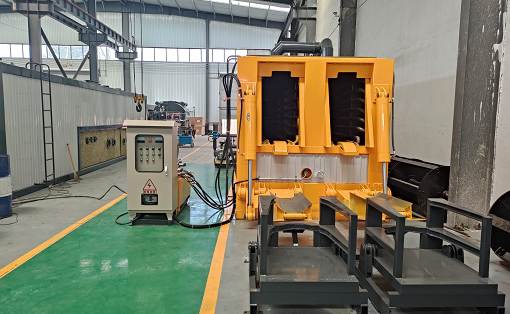Construction preparation of slurry mixture during road maintenance
1. Observation: Pay attention to the dynamics of the road surface after milling (three to four days), and pave the milled and roughened road surface in time when paving conditions are met.
2. On-site mixing: During construction and production, a sealing slurry truck should be used for on-site mixing. Through the metering equipment of the sealing truck and on-site operation by a robot, it is ensured that emulsified asphalt, water, mineral materials, fillers, etc. can be mixed according to a certain proportion. , stir through the mixing box, and the paving thickness is not higher than the roughing depth.
1. Observation: Pay attention to the dynamics of the road surface after milling (three to four days), and pave the milled and roughened road surface in time when paving conditions are met.
2. On-site mixing: During construction and production, a sealing slurry truck should be used for on-site mixing. Through the metering equipment of the sealing truck and on-site operation by a robot, it is ensured that emulsified asphalt, water, mineral materials, fillers, etc. can be mixed according to a certain proportion. , stir through the mixing box, and the paving thickness is not higher than the roughing depth.
3. On-site paving:
(1) Determine the paving width according to the spacing between the third lane markings, and start paving according to the driving direction. During paving, the manipulator starts operating as needed to make the mixture flow into the paving trough. When there is 1/3 of the mixture in the paving trough, a starting signal is sent to the driver;
(2) The driver of the seal truck should drive at a certain speed and at a constant speed. During driving, he should observe the gestures of the operator through a reflector and cooperate with the operator tacitly. The driving line should be straight and even;
(3) The leveler adjusts the handle in a timely manner according to the required thickness to ensure uniform paving thickness. If uneven thickness is found, timely and accurate adjustments must be made to avoid over-thin and over-thickness caused by excessive adjustment. When paving, pay attention to the thickness control near the marking line to ensure that there is no obvious misalignment, and adjust the mixture gradation to ensure that the edge remains level with the original road surface.
(4) If any of the various materials on the vehicle is used up, the engine should be immediately disengaged from the conveyor belt clutch, and the valves of the water pump and lotion pump should be closed. After all the mixture in the mixing box and paving tank is spread, it will stop moving forward.
(5) After each vehicle is paved, the paving trough should be cleaned in time, and the rubber scraper behind the paving trough should be sprayed and scraped to keep the paving trough clean, and then the remaining mixture in the paving trough should be cleaned. Centralized processing.
(6) During construction and production, a sealing coat truck should be used for on-site mixing. The metering equipment of the sealing coat truck should be used and operated by a robot on site to ensure that emulsified asphalt, water, mineral materials, fillers, etc. can be mixed according to a certain proportion. box for mixing.
4. Early maintenance: After paving and before solidification, all vehicles and pedestrians should be prohibited from passing. A dedicated person should be assigned to do early maintenance to avoid damage to the road surface. If the traffic is not closed tightly or the original road surface is not cleaned sufficiently, etc. , when local diseases are caused, they should be repaired immediately with slurry to prevent the disease from expanding.
5. Open to traffic: When the adhesion force of the mixture reaches 200N·cm, the initial maintenance is completed, and vehicles can be opened to traffic when there are no obvious wheel marks when driving on it.




































